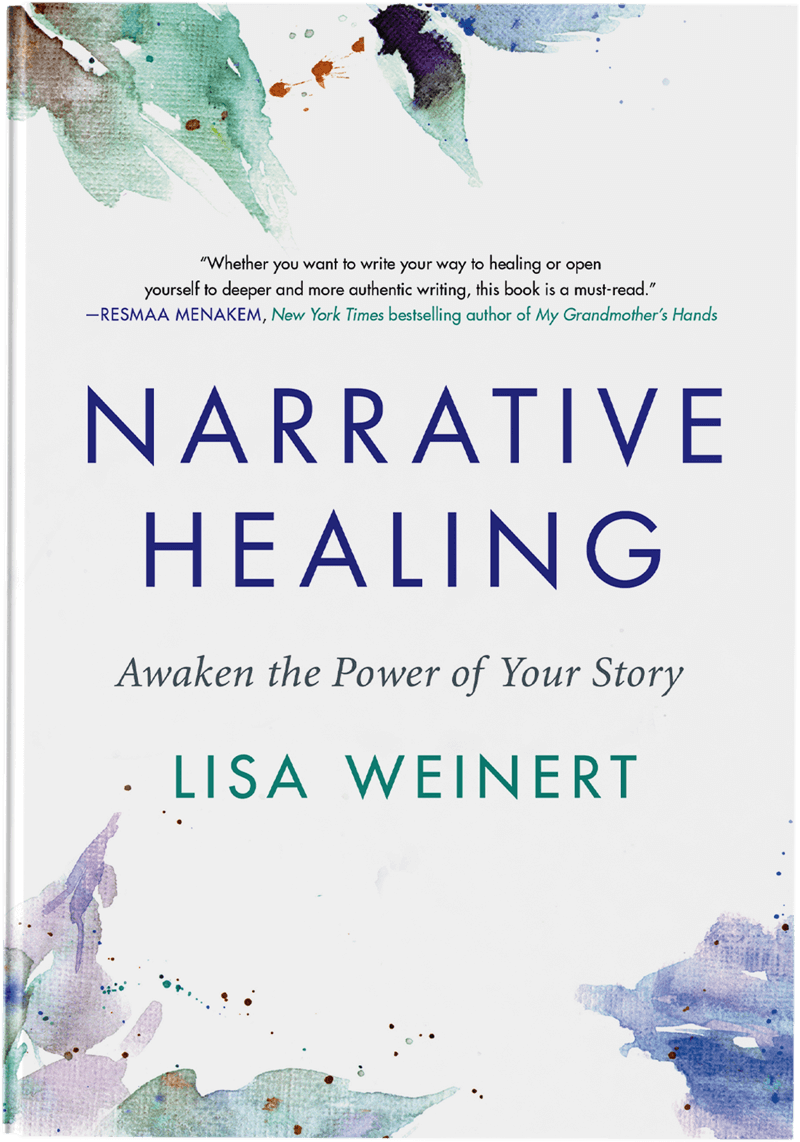In the midst of life’s most turbulent moments, there’s a natural urge to make sense of our experiences—to find words for the chaos swirling inside us. Writing can be a powerful tool for self-care and reflection, but as I’ve learned through both my own practice and my work in Narrative Healing, the way we approach the page matters deeply. Writing directly about a fresh wound can sometimes deepen the pain, much like poking at something that needs time and space to heal. But by writing around the wound—approaching the experience gently and with distance—we can uncover a path to healing and self-discovery. In narrative therapy, we explore the stories we tell about ourselves, shaping them with compassion and curiosity to access new perspectives. This method of writing aligns beautifully with that practice, inviting us to process what we’re living through without retraumatizing ourselves.
In this excerpt from my book, Narrative Healing: Awaken the Power of Your Story I share techniques for writing from the eye of the storm, offering ways to navigate challenging emotions with care and creativity. These tools can help you find grounding and clarity, whether you’re navigating trauma, celebrating joy, or simply making sense of your story.
Excerpt: Write Around the Wound: Learning to Write from the Eye of the Storm
Sometimes we have a burning urge to write…
Sometimes we have a burning urge to write in the middle of a traumatic, life-changing moment. This could look like a major emotional turmoil or chronic illness; it could also be an assault or violation or major milestone, like getting sober, leaving a marriage, moving, or any other out-of-the-ordinary experiences. We also get this urge when really joyful and exciting things happen. While writing can be a helpful tool for self-care, soothing, and clarifying, it’s hard, maybe impossible, to write well in the middle of a frenzy.
When you’re right in the middle of the chaos of a challenging time, writing directly about your challenge isn’t always healthy or fruitful. It’s easy to get too close and lost in the shadows of the story as it’s playing out—poking the fresh wound rather than giving it space to heal. I’ve seen time and time again, both in my own experi-nce and working with others, how writing about a trauma as it is happening can deepen the intensity of feeling rather than provide grounding and perspective. It takes time to process and sift through complicated emotional experiences. I’ve learned that writing around the wound or adjacent to it brings about more comfort, healing, and better, more evocative writing.
Here are a few ways to work with a challenge while it is happening:
1. Make it Fiction
If you know you are writing about difficult emotions or a traumatic incident, try not writing about it directly. Free your grip on the details of the incident by changing a key element of the story (when it happened, the point of view, or where it happened). Be gentle. You may also learn more about the true impact of the event on your spirit and find some better language for expressing what happened and how you feel about it. Writing as fiction will help you create more empathy for yourself.
You don’t need to add magic or fairies or anything outlandish to make it fiction; just change one feature, such as:
age
occupation
gender
race
location
nationality
Change something significant about the story—like the point of view or time period—or change the incident entirely.
2. Time Is a Tool
Instead of writing in the present tense, choose a time many months (or even years) before the incident and write about a benign moment. If time has passed since the incident, you can shoot ahead in time and write about many seasons later. You will still explore the themes and emotions you want to because this is you writing, but the tool of time will allow you to write more richly, and you will have more access to details and descriptions.
3. Just the Facts
What’s important during these times, these times that you know you’ll want to write about at some point, is to help yourself remember and record. For a week, keep a fact-based journal. What this means is that you’ll jot down everything you take in with your senses, just the facts, no emotions —what you actually see, hear, smell, taste, or feel. Avoid using reflective language or analysis or feeling. Simply make. al ist of what happened using the same tone, thoroughness, and clarity that you might offer a court of law.
Excerpt from Narrative Healing: Awaken the Power of Your Story by Lisa Weinert, © 2024. All rights reserved.



